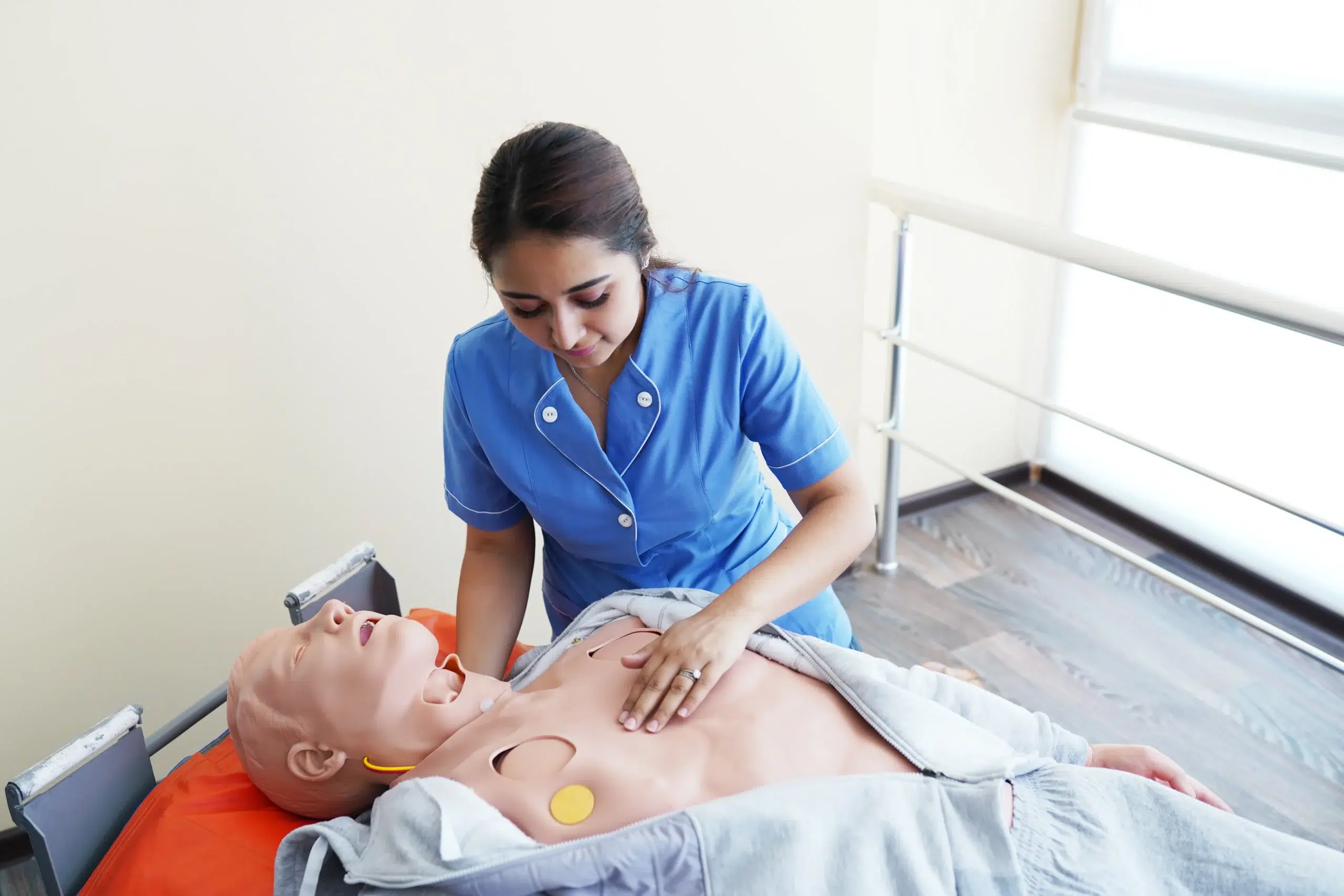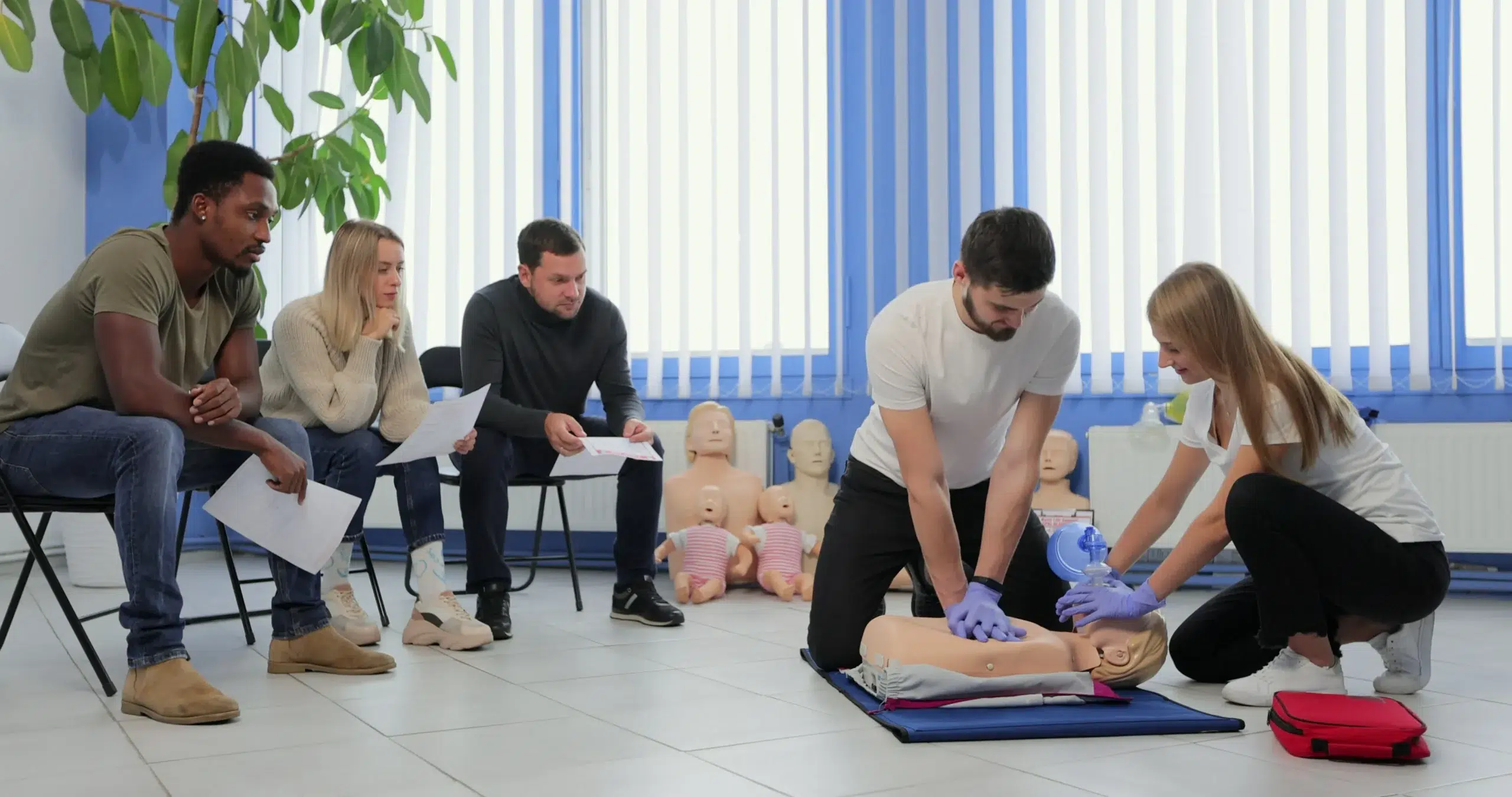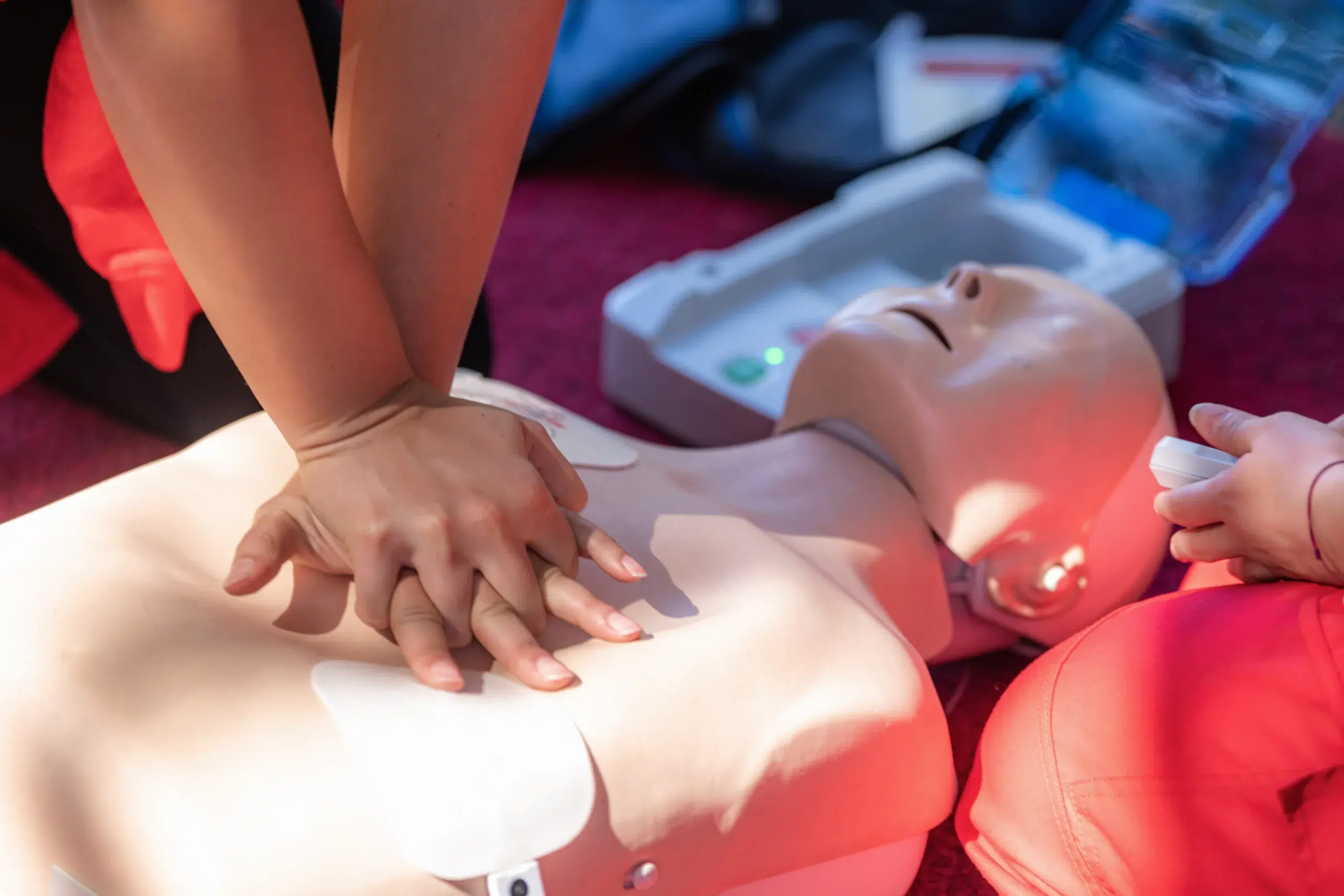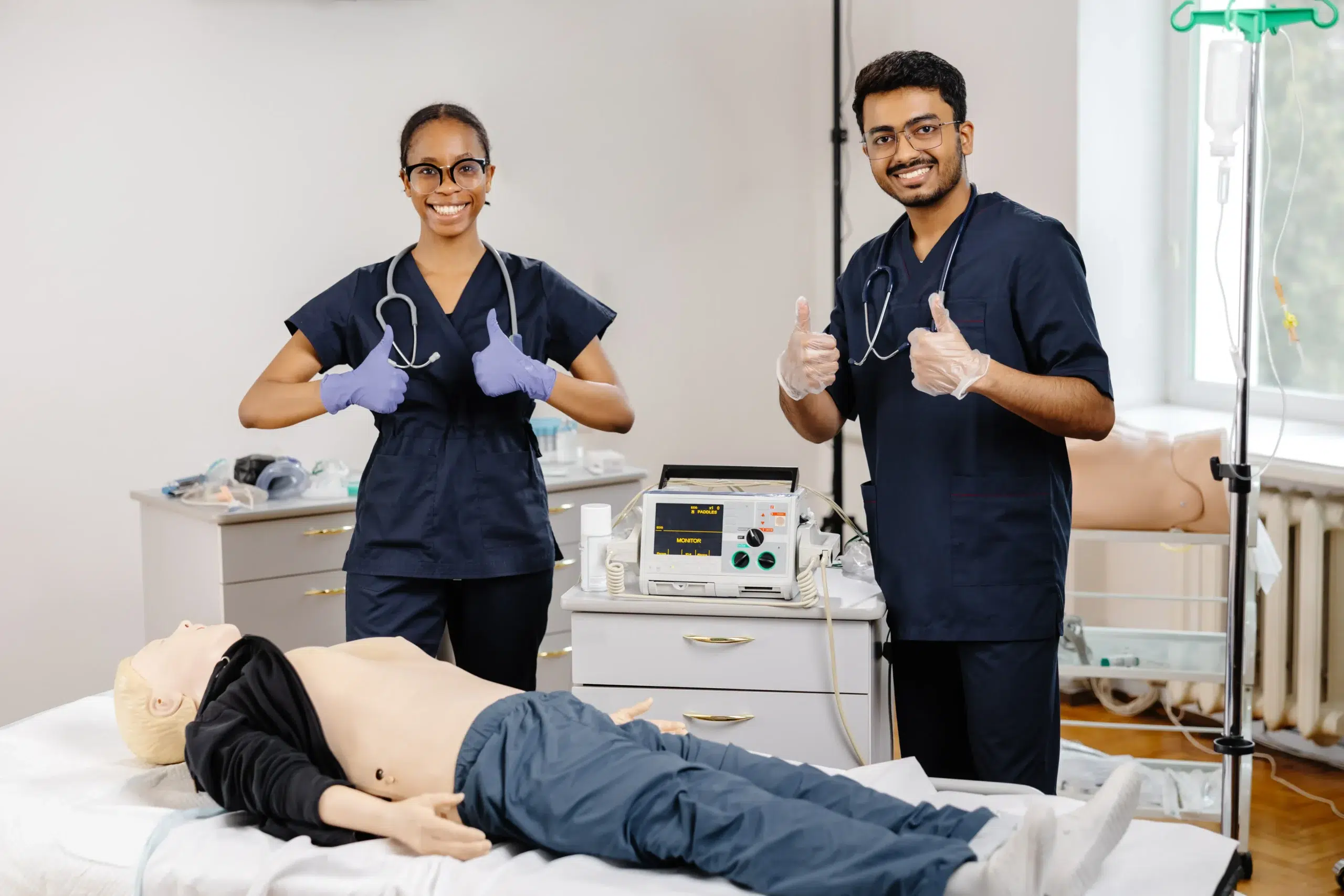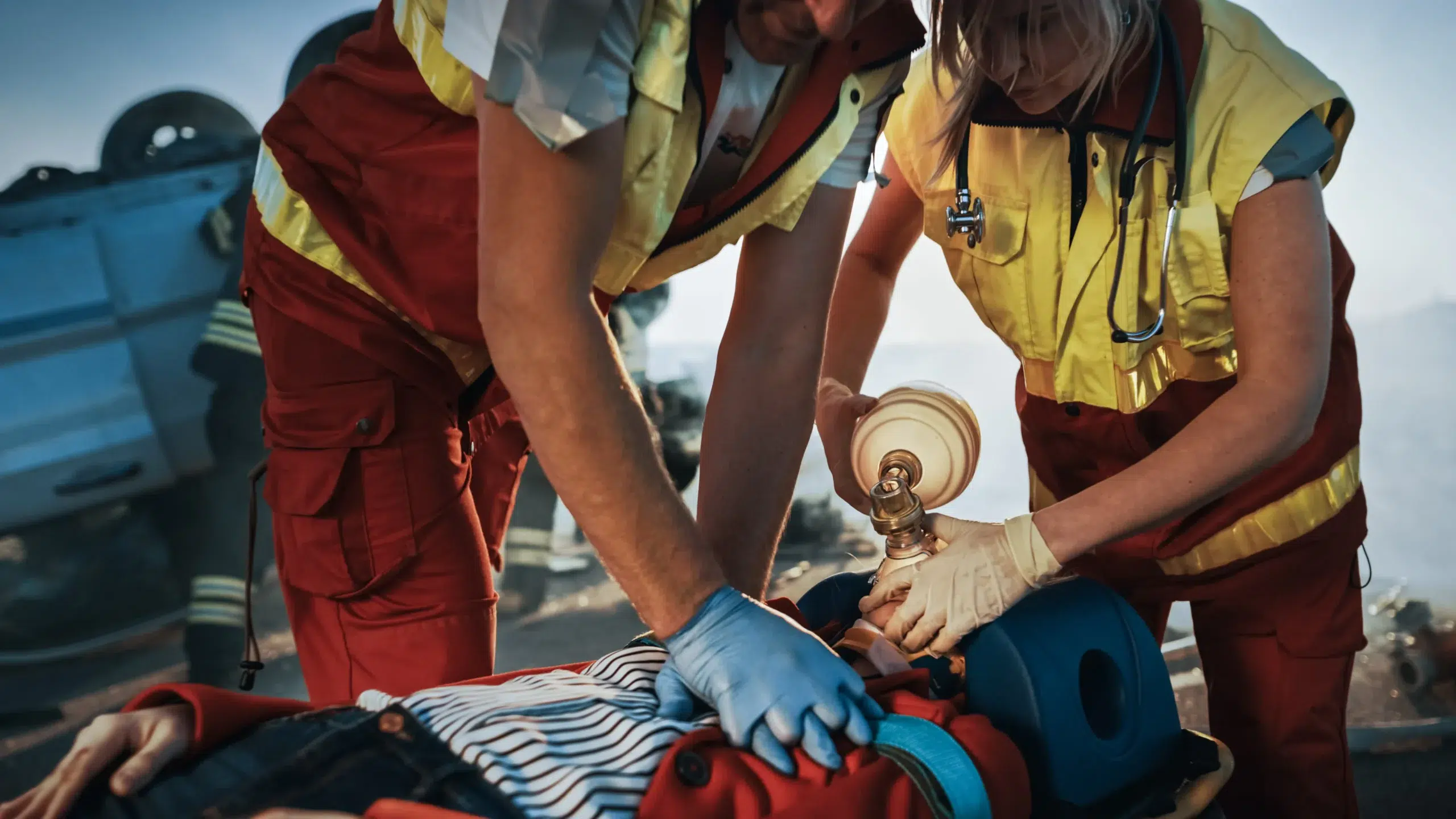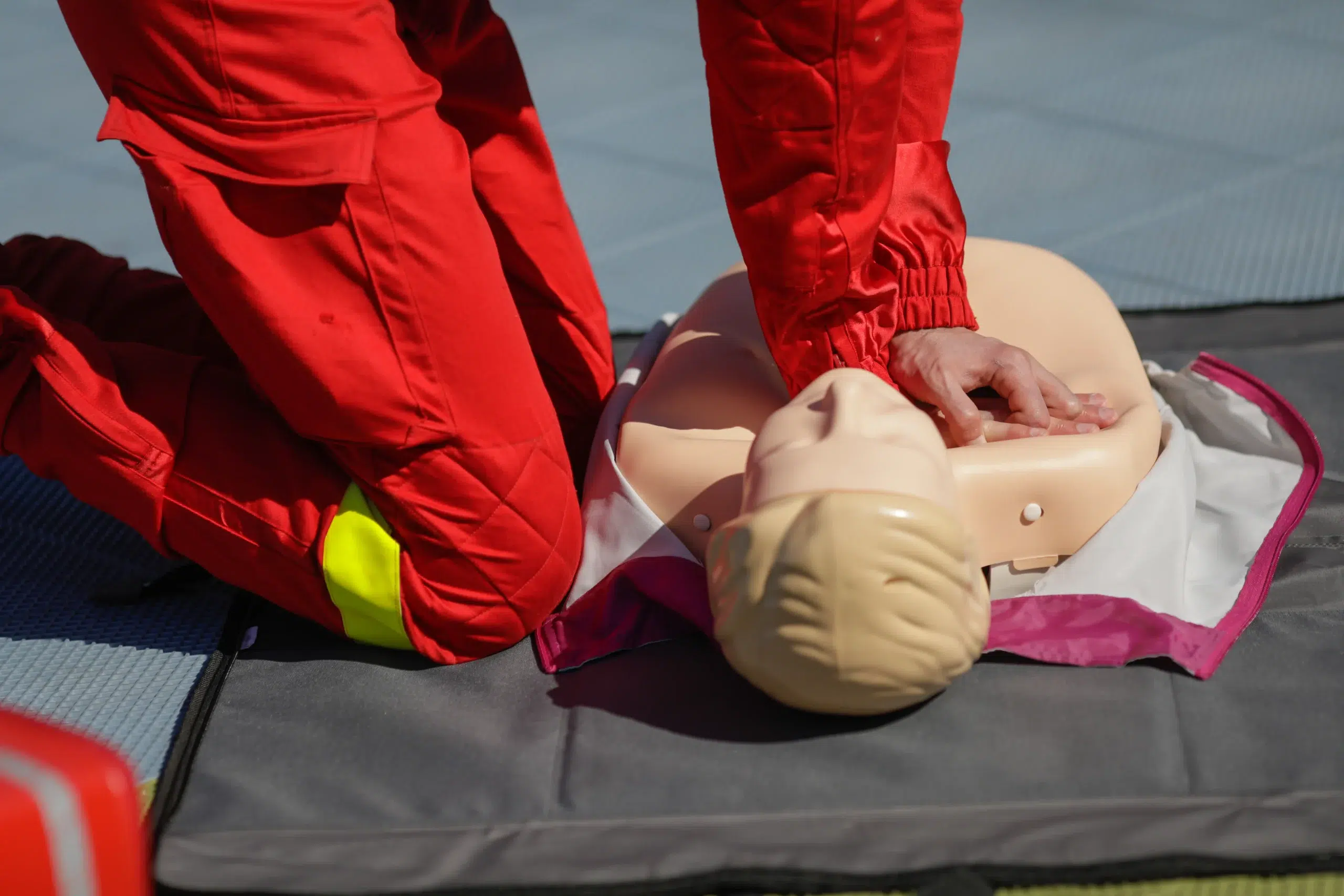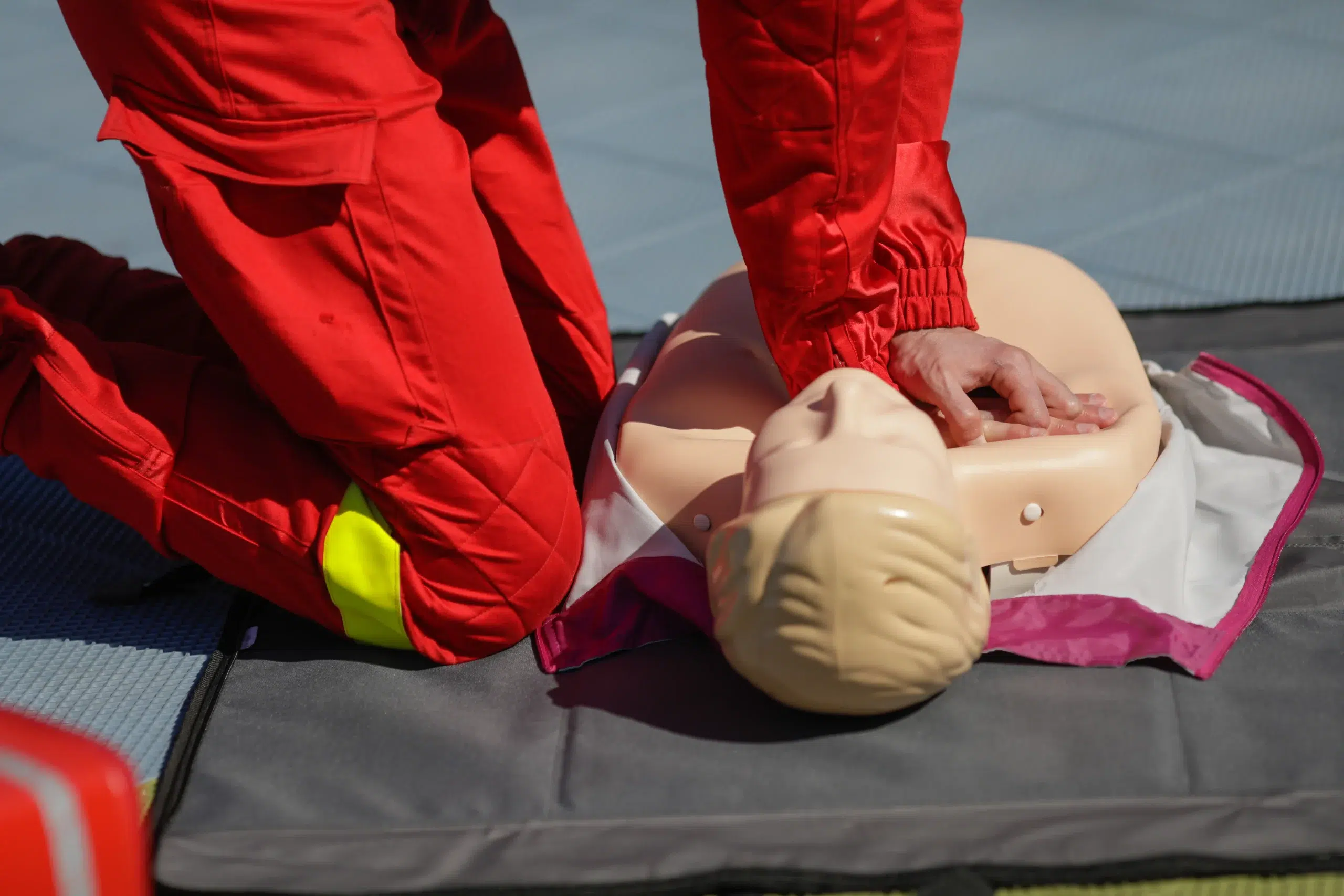Empowering yourself with life-saving skills starts with finding the right CPR training. If you’re searching for “San Jose CPR classes near me,” this guide is for you. We’ll explore the different types of CPR classes available in San Jose, from basic CPR and First Aid to advanced certifications like BLS, ACLS, and PALS. We’ll also discuss the importance of choosing an accredited training provider, like Safety Training Seminars, which offers American Heart Association-certified courses. This guide will also cover the costs of CPR classes, what to expect during training, and how to maintain your certification. Let’s get started on your journey to becoming a confident and prepared lifesaver.
Key Takeaways
- CPR knowledge empowers you to save lives: Learning CPR, whether you’re a healthcare professional or not, equips you to respond effectively during cardiac emergencies and significantly improves survival outcomes. Find a course that meets your specific needs and professional requirements.
- Finding the right CPR class in San Jose is easy: Explore various training providers, including Safety Training Seminars, the American Red Cross, and local community colleges, to find a course that fits your schedule, budget, and preferred learning style. Consider factors like class location, format, and included certifications (CPR, First Aid, AED).
- Stay current with your CPR skills: Maintain your certification by taking renewal courses every two years and consider additional training opportunities to stay updated on the latest techniques and guidelines. This ensures you’re always prepared to provide the most effective care.
What is CPR and Why is it Important?
CPR, or cardiopulmonary resuscitation, is a life-saving technique used when someone’s heart stops beating. It combines chest compressions and rescue breaths to circulate oxygenated blood to the brain and other vital organs until professional medical help arrives. Learning CPR empowers you to respond effectively during emergencies and potentially save a life.
Life-Saving Potential
CPR can dramatically increase the chances of survival for someone experiencing cardiac arrest. In fact, studies show that knowing CPR can double or even triple a person’s survival rate in such situations. Immediate intervention is crucial, as every minute without CPR decreases the likelihood of a positive outcome. Bystander CPR can truly make the difference between life and death.
Community Impact
Community involvement plays a vital role in promoting CPR education and ensuring widespread preparedness for emergencies. Community outreach programs raise awareness about the importance of CPR and provide accessible training opportunities. These programs equip individuals with the skills and confidence to act quickly and effectively when needed. A community trained in CPR creates a safer environment for everyone.
Common Misconceptions About CPR
One common misconception is that all CPR training is created equal. While many online CPR resources exist, it’s essential to pursue training through a credible organization. Many online-only CPR certifications are not accepted by major certifying organizations, including the American Heart Association. For a certification recognized by healthcare providers and employers, choose an accredited program that includes hands-on skills practice and evaluation. Safety Training Seminars offers American Heart Association-certified courses that meet these requirements.
CPR Classes in San Jose: What’s Available?
CPR classes in San Jose offer a range of certifications and specializations to meet diverse needs. Whether you’re a healthcare professional, a concerned parent, or simply want to be prepared for emergencies, there’s a course for you. Let’s explore the different types of CPR training available in San Jose.
Adult CPR
Adult CPR classes teach you the essential skills to respond to cardiac arrest in adults. You’ll learn to recognize the signs of a heart attack, perform chest compressions, and provide rescue breaths. These courses often incorporate Automated External Defibrillator (AED) training, teaching you how to use this life-saving device. Many providers, like AllCPR San Jose, offer American Heart Association (AHA) and Red Cross certified courses, ensuring your training aligns with nationally recognized standards.
Child and Infant CPR
Child and infant CPR classes focus on the specific techniques for assisting children and infants experiencing cardiac arrest. Because their bodies are smaller and more delicate, the methods differ from adult CPR. You’ll learn how to adjust compression depth and rescue breath techniques for these age groups. Understanding these critical differences can significantly impact a child or infant’s chance of survival. These courses are invaluable for parents, caregivers, and anyone working with young children.
First Aid and AED Training
First aid training equips you with the skills to handle various medical emergencies, from minor cuts and burns to more serious injuries like fractures and allergic reactions. You’ll learn to assess a situation, provide initial care, and when necessary, call for professional medical help. AED training is often included in first aid courses or offered as a standalone certification. Knowing how to use an AED can dramatically increase the chances of survival for someone experiencing sudden cardiac arrest. Safety Training Seminars offers comprehensive first aid and AED training alongside their CPR certification courses.
BLS for Healthcare Providers
Basic Life Support (BLS) certification is crucial for healthcare professionals. BLS courses cover advanced life-saving techniques, including high-quality CPR, airway management, and using bag-valve masks. The American Heart Association’s Resuscitation Quality Improvement (RQI) program offers a flexible and convenient way for healthcare providers in San Jose to obtain and maintain their BLS certification. This program allows professionals to complete online coursework and skills testing, fitting certification requirements into their busy schedules.
Top CPR Class Providers in San Jose
Finding the right CPR class can feel overwhelming, but several reputable organizations and providers in San Jose make the process easier. Here’s a quick rundown of some top choices to help you in your search:
Safety Training Seminars
Safety Training Seminars offers American Heart Association (AHA) CPR, BLS, ACLS, PALS, and First Aid courses in over 60 Northern California cities, including San Jose. Known for comprehensive training and flexible scheduling, they offer a convenient way to get certified. They also have a low price guarantee, ensuring you get the best value for your training.
American Red Cross
The American Red Cross is a trusted name in emergency preparedness and offers CPR and First Aid classes in San Jose. Their courses are OSHA-compliant, meeting workplace safety standards and providing nationally recognized certification. Taught by expert instructors, these classes equip participants with the skills and knowledge to respond effectively in emergencies.
San Jose CPR Certification
San Jose CPR Certification is a woman-owned AHA Training Center offering high-quality AHA BLS, ACLS, PALS, CPR, and First Aid courses right here in San Jose. They focus on creating a supportive learning environment with expert instruction, making the learning experience positive and effective.
In-Home CPR
Looking for training in the comfort of your own home or office? In-Home CPR brings certified instructors directly to you. Serving the San Francisco Bay Area and Sacramento, they offer flexible and personalized CPR, BLS, First Aid, and ACLS training.
Local Community Colleges
Many local community colleges offer CPR certification courses as part of their health and safety programs. This can be a more affordable option and often fits well with busy schedules. Check with colleges in your area for course availability and registration information.
What Happens in a San Jose CPR Class?
CPR classes in San Jose cover essential lifesaving skills, blending theoretical knowledge with hands-on practice. Whether you’re a healthcare professional needing BLS certification or a concerned parent wanting to learn CPR for infants and children, understanding the class structure can help you feel prepared.
Course Duration and Format
CPR classes typically last a few hours, depending on the specific course and learning format. You can find in-person classes, providing a structured learning environment with direct instructor interaction. Blended learning formats, combining online modules with in-person skills sessions, offer flexibility for busy schedules. Safety Training Seminars offers a variety of scheduling options to fit your needs.
Hands-on Practice and Skills Taught
Hands-on practice forms the core of any good CPR class. You’ll learn how to perform chest compressions, rescue breaths, and use an automated external defibrillator (AED). Instructors demonstrate proper techniques and provide guidance as you practice on mannequins, ensuring you develop the muscle memory and confidence to act effectively in a real emergency. Many courses also cover choking relief and basic first aid.
Certification Process
Upon successful completion of the course and skills test, you’ll receive an official American Heart Association (AHA) certification card. This certification is typically valid for two years. Renewal courses are readily available to keep your skills current.
Instructor Qualifications and Experience
CPR instructors in San Jose are experienced professionals with backgrounds in healthcare and emergency medical services. They undergo rigorous training and maintain up-to-date knowledge of the latest AHA guidelines. This expertise ensures you receive high-quality instruction and learn the most effective lifesaving techniques. Look for training centers that prioritize instructor experience and adhere to workplace safety standards.
How Much Do CPR Classes Cost in San Jose?
Knowing the price range for CPR classes helps you budget and find the best value. Let’s break down the costs associated with CPR training in San Jose.
Average Price Range
CPR class costs vary depending on several factors, including the type of certification, the course format (in-person or online), and the training provider. Generally, you can expect to find CPR classes ranging from free (often offered by community organizations) to upwards of $100. The price typically reflects the training’s depth, the included materials, and the instructor’s expertise. Basic CPR classes tend to be on the lower end of the price spectrum, while more advanced certifications like ACLS or PALS may cost more. Bundling CPR and first aid training together can also influence the overall cost.
Group Discounts and Promotions
If you’re training a group, like workplace staff or a community group, ask about group discounts. Many CPR training providers offer reduced rates for group bookings, making it a more affordable option to equip multiple people with life-saving skills. Check with providers like Safety Training Seminars about their group discounts. You might also find seasonal promotions or discounts for certain demographics, so it’s always worth asking.
Safety Training Seminars’ Low Price Guarantee
Safety Training Seminars is committed to providing affordable, high-quality CPR training in San Jose. Their low price guarantee ensures competitive pricing on all courses, making essential, life-saving training accessible for individuals and groups. Visit their website for more information on their low price guarantee and course offerings.
Online vs. In-Person Class Costs
Another factor influencing cost is whether you choose an online or in-person class. Online CPR courses can be more budget-friendly, offering a convenient and flexible way to learn the basics. However, online courses typically don’t include the hands-on practice required for official certification. In-person classes provide hands-on training with certified instructors, allowing you to develop and practice your skills in a realistic environment. While in-person training might have a higher upfront cost, it offers a more comprehensive learning experience. Safety Training Seminars offers both online and in-person options, allowing you to choose the format that best suits your needs and budget.
Choose the Right CPR Class
Finding the perfect CPR class involves a bit of homework. Think about your specific needs, schedule, preferred learning style, and the course content itself. Taking the time to consider these factors will ensure you get the most out of your training.
Assess Your Needs
Why are you taking CPR training? Are you a healthcare provider needing BLS certification? Or are you a parent, teacher, or childcare provider looking for a general CPR and First Aid course? Different professions have different requirements, so choosing a class tailored to your needs is essential. For example, healthcare professionals often require more advanced training than the general public. Knowing your “why” will guide you to the right course. If you’re unsure which type of CPR class you need, check with your employer or professional organization.
Consider Your Schedule
Life gets busy, so finding a class that fits your schedule is key. Look for providers that offer flexible scheduling options. Safety Training Seminars, for example, offers classes daily, including weekends, to accommodate various schedules. Think about your availability – are weekday evenings better, or would a weekend course work best? Knowing your availability beforehand will narrow down your options.
Evaluate Course Content
Not all CPR classes are created equal. Check what each course covers. Some might focus solely on adult CPR, while others include child and infant CPR, First Aid, and AED training. If you work in healthcare, make sure the course aligns with current industry standards and guidelines from organizations like the American Heart Association. Reviewing the course content will help you feel confident you’re learning the necessary skills. Look for classes that offer a comprehensive curriculum.
In-Person vs. Online Training: Which is Right for You?
Do you thrive in a hands-on, interactive environment? Or do you prefer the flexibility of online learning? Many providers offer both in-person and online options, and some even offer blended learning, which combines online coursework with in-person skills practice. Consider your learning style and how you best absorb information when making your decision. If you learn best by doing, an in-person class might be a better fit. If you need more flexibility, an online or blended learning course could be ideal. The key is to choose a format that sets you up for success. Think about your learning preferences and choose the format that will help you learn most effectively.
Find and Enroll in a CPR Class Near You
Ready to become CPR certified? Finding the right class in San Jose is straightforward. Here’s how to find and enroll:
Use Online Search Tools
The internet is your best friend when searching for local CPR classes. A quick search for “CPR classes San Jose” will reveal various options. The American Red Cross website offers a convenient class finder to locate CPR training near you. You can also use Google or Bing to discover local training centers and independent instructors.
Contact Local Providers
Reach out to providers directly to learn more about their courses. Safety Training Seminars offers a range of American Heart Association courses throughout Northern California. Contacting providers lets you ask questions about class schedules, course content, and certification options. This personalized approach helps you find the perfect fit.
Compare Class Locations and Accessibility
Consider factors like class location, schedule flexibility, and accessibility. Some providers, like CPR Training Center, offer classes in multiple locations throughout the Bay Area, including San Jose and surrounding cities. Think about what works best for your schedule and commute. If you’re part of a larger group, ask about on-site training, a convenient option many providers offer. This can be great for workplaces, community groups, or families.
Prepare for Your CPR Class
Getting ready for your CPR class doesn’t require a ton of prep, but a few simple steps will make sure you’re set up for a positive learning experience. Knowing what to expect and how to prepare can help you focus on the important skills you’re about to learn.
What to Bring
For most CPR classes, you won’t need to bring much. A notebook and pen can be helpful for jotting down notes, though many courses offer printed materials. If you prefer to take notes digitally, a tablet or laptop can work, but make sure to ask your instructor beforehand if it’s okay to use them during class.
Pre-Class Study Materials
While not always required, reviewing any pre-class materials provided by your chosen CPR training center can give you a head start. Safety Training Seminars offers resources to help students familiarize themselves with basic concepts before class. Even a quick overview can make the in-class instruction more effective. Check with your chosen provider to see what materials they offer.
Dress Code and Comfort Considerations
CPR classes involve hands-on practice, so comfortable clothing is essential. You’ll be kneeling, bending, and practicing compressions, so avoid restrictive clothing. Comfortable shoes are also a must. You’ll want to be able to move freely and focus on learning the techniques, not on what you’re wearing.
Benefits of CPR Certification
Knowing CPR can empower you to make a real difference in critical situations. Whether you’re a healthcare professional, a concerned citizen, or looking to advance your career, CPR certification offers a range of valuable benefits.
For Healthcare Professionals
CPR certification is a cornerstone of healthcare practice. The American Heart Association’s RQI program offers a streamlined path to maintaining your BLS, ACLS, and PALS certifications. This program blends online learning with in-person skills assessments, making it a convenient way to stay current with the latest resuscitation guidelines. Beyond individual benefits, CPR certification is crucial for healthcare organizations. Group discounts often make training more affordable, ensuring teams can deliver the highest standard of patient care.
For the General Public
Learning CPR can quite literally be the difference between life and death. Studies show that knowing CPR can significantly improve the survival rate of someone experiencing cardiac arrest outside of a hospital setting. Community initiatives often offer CPR training, empowering individuals to respond effectively during emergencies. This widespread training creates a network of lifesavers within the community, ready to assist until professional help arrives.
Career Advancement Opportunities
While the primary benefit of CPR certification is the ability to save lives, it can also open doors to career advancement. Many professions, from childcare to personal training, require or highly recommend CPR certification. Adding this credential to your resume demonstrates your commitment to safety and preparedness. If you’re considering becoming a certified CPR instructor, the investment in training and certification can lead to a rewarding career path. Group discounts can make pursuing instructor certification more financially accessible.
Maintain Your CPR Certification
CPR certification isn’t a one-and-done deal. Staying current with the latest guidelines and techniques ensures you’re prepared to provide the most effective care in an emergency. This section covers everything you need to know about maintaining your CPR certification in San Jose.
Renewal Requirements
CPR certifications, like those offered by the American Red Cross, are typically valid for two years. Before your certification expires, you’ll need to take a renewal course. Keep track of your certification expiration date and plan to recertify a few weeks in advance to avoid any lapse in your credentials. Safety Training Seminars offers convenient renewal courses designed to refresh your skills and knowledge.
Continuing Education Opportunities
Beyond your renewal requirements, consider taking advantage of continuing education opportunities to enhance your CPR skills. Some providers offer short, focused skills check sessions—perfect for busy professionals. These sessions can provide valuable feedback and address any questions you might have. Check with local providers or CPR Training Center for available continuing education options. Safety Training Seminars also provides ongoing support to its students, ensuring you feel confident in your abilities.
Stay Updated on Latest Techniques
CPR techniques and guidelines can evolve based on the latest research. Staying informed about these updates is crucial for providing high-quality care. For example, studies have shown the benefits of incorporating visual feedback in CPR training to improve skill retention. Similarly, distributed practice with real-time feedback has also been shown to enhance CPR quality and long-term skill retention. Stay informed about these advancements by subscribing to industry newsletters, attending workshops, or following reputable organizations like the American Heart Association. You can also check back on the Safety Training Seminars blog for updates and insights.
Related Articles
- The Importance of CPR in Saving Lives – San Jose CPR Classes
- CPR Myths You Need to Stop Believing – San Jose CPR Classes
- CPR Classes in San Jose: Your Complete Guide – San Jose CPR Classes
- San Jose CPR Certification: Your Complete Guide – San Jose CPR Classes
- Why CPR Is Crucial in Healthcare
Frequently Asked Questions
What’s the difference between CPR and First Aid?
CPR focuses specifically on restoring blood circulation and breathing when someone’s heart stops. First Aid covers a broader range of medical emergencies, from minor injuries like cuts and burns to more serious situations like choking or allergic reactions. Often, CPR and First Aid training are offered together.
How do I choose the right CPR class in San Jose?
Think about why you need CPR training. Are you a healthcare provider, a childcare worker, or just someone who wants to be prepared? Your reason for taking the class will help you find the right level and type of training. Also, consider your schedule and whether you prefer in-person or online learning. Finally, compare prices and look for reputable providers like Safety Training Seminars, the American Red Cross, or local community colleges.
Does online CPR certification count?
While online CPR courses offer a convenient way to learn the basics, they often don’t include the hands-on practice and in-person evaluation required for official certification from organizations like the American Heart Association. If you need a certification for your job or other professional reasons, make sure the course meets the necessary requirements. Look for blended learning options that combine online learning with in-person skills sessions.
How often do I need to renew my CPR certification?
Most CPR certifications are valid for two years. It’s a good idea to mark your calendar a few weeks before your certification expires so you can find a renewal course and avoid any lapse in your credentials.
What if I’m nervous about performing CPR in a real emergency?
It’s completely normal to feel nervous about using CPR in a real-life situation. That’s why hands-on practice in a supportive learning environment is so important. A good CPR class will give you the confidence and muscle memory you need to respond effectively. Remember, any attempt at CPR is better than none.


